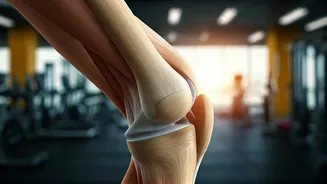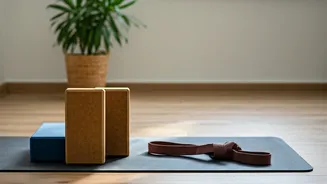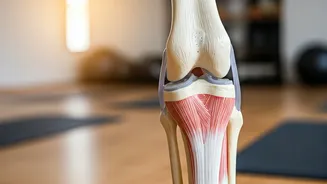Understanding Knee Health
Knee health is essential for overall mobility and well-being, and its importance is often overlooked until pain arises. The knee joint, being one of the
most complex in the body, is susceptible to various issues, including osteoarthritis. Osteoarthritis, characterized by the breakdown of cartilage within the joint, leads to pain, stiffness, and reduced range of motion. Factors such as age, genetics, and lifestyle play a crucial role in the development of knee problems. Regular exercise, including yoga, can significantly impact knee health by strengthening the muscles that support the joint, improving flexibility, and reducing inflammation. Maintaining a healthy weight and avoiding high-impact activities are also vital in protecting your knees and ensuring they remain functional and pain-free for years to come. Recognizing the early signs of knee problems and taking proactive steps can help prevent further damage and enhance the quality of life.
Yoga's Healing Benefits
Yoga presents a holistic approach to knee health, blending physical postures (asanas), breathing techniques (pranayama), and mindfulness to promote healing and well-being. Yoga asanas like Trikonasana (Triangle Pose), Virabhadrasana II (Warrior II Pose), and Tadasana (Mountain Pose) help strengthen the muscles surrounding the knee, including the quadriceps, hamstrings, and calf muscles. Strengthening these muscles provides crucial support to the knee joint, improving stability and reducing pressure. Furthermore, yoga enhances flexibility, which allows a greater range of motion and diminishes stiffness, common symptoms of knee problems. Practicing yoga regularly can significantly reduce pain and increase overall joint function, assisting in the management of conditions such as osteoarthritis. The integration of mindful breathing and meditation in yoga sessions also alleviates stress, a common contributor to pain perception, promoting relaxation and aiding the body's natural healing processes. Consequently, yoga serves as a comprehensive method for enhancing knee health and overall quality of life.
Key Yoga Asanas
Several yoga asanas are particularly beneficial for knee health, each targeting specific muscle groups and offering unique advantages. Trikonasana, or Triangle Pose, extends and strengthens the legs and core, boosting stability around the knee. Virabhadrasana II, or Warrior II Pose, builds strength in the quadriceps and hamstrings, improving knee support. Tadasana, or Mountain Pose, while seemingly simple, focuses on alignment, which can enhance posture and diminish stress on the knees. Setu Bandhasana (Bridge Pose) strengthens the glutes and hamstrings, supporting the knee joint indirectly. Supta Baddha Konasana (Reclined Bound Angle Pose) gently opens the hips and inner thighs, improving flexibility, and easing potential strain on the knees. Practicing these asanas with proper alignment and modifications, when necessary, is crucial to gain maximum benefits while preventing injury. It's recommended to consult a yoga instructor or healthcare professional before starting any new exercise routine, especially if you have existing knee problems, to ensure that the practice is safe and effective for your individual needs.
Modifications and Safety
Adapting yoga poses to accommodate individual needs and limitations is essential for safe and effective practice. Modifications are especially important for those with knee pain or existing conditions like osteoarthritis. When performing poses like Trikonasana or Virabhadrasana II, it's beneficial to bend the front knee less deeply or to shorten the stance to minimize stress on the joint. Using props such as blocks to support the hands in poses or placing a folded blanket under the knee in seated postures can provide additional comfort and stability. Always listen to your body and avoid pushing through pain. If a pose causes discomfort, gently ease back or modify it until you find a position that feels manageable. A yoga instructor can provide personalized guidance and modifications, ensuring you practice safely and gain the most benefit from your yoga routine. Remember, the goal is to enhance your well-being, not to push yourself beyond your physical limits.
Combining Yoga with Others
While yoga is extremely beneficial for knee health, integrating it with other forms of exercise and lifestyle adjustments can enhance the results. Combining yoga with low-impact activities like swimming, walking, or cycling can help maintain cardiovascular health and improve overall fitness without putting excessive pressure on the knees. A balanced exercise routine should involve strengthening exercises to build muscle around the knee and flexibility exercises to improve joint mobility. Diet plays an essential role in joint health. A diet rich in anti-inflammatory foods, such as fruits, vegetables, and omega-3 fatty acids, can help minimize pain and promote healing. Maintaining a healthy weight further reduces the stress on the knees. Combining regular yoga practice with other healthy habits creates a more comprehensive approach to managing knee problems, improving overall health, and enhancing quality of life.











